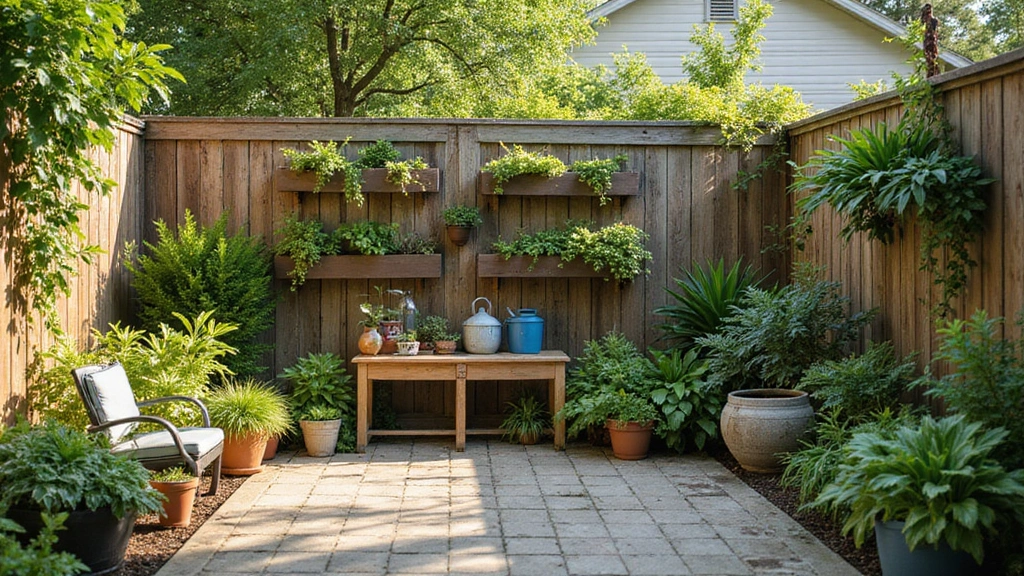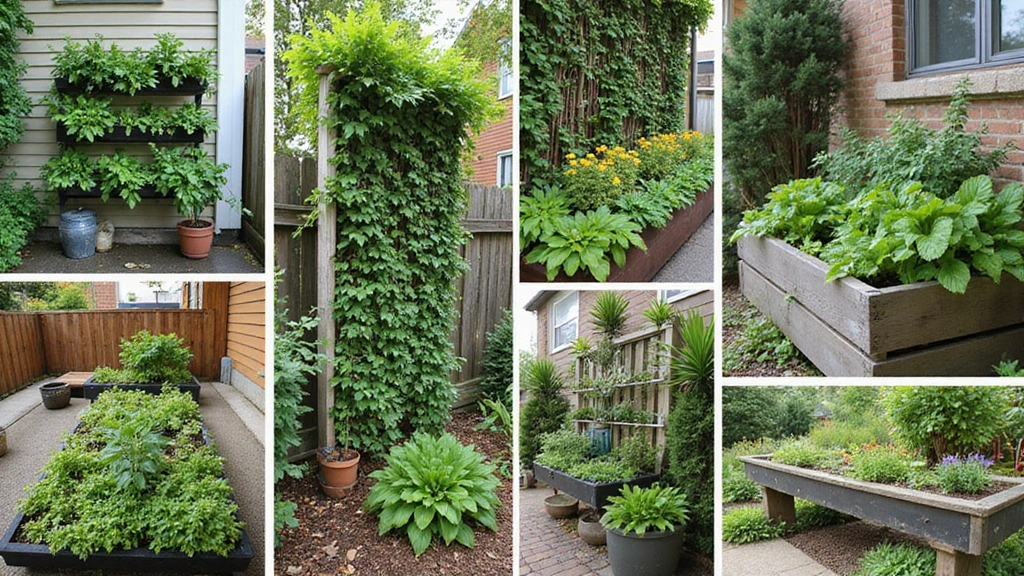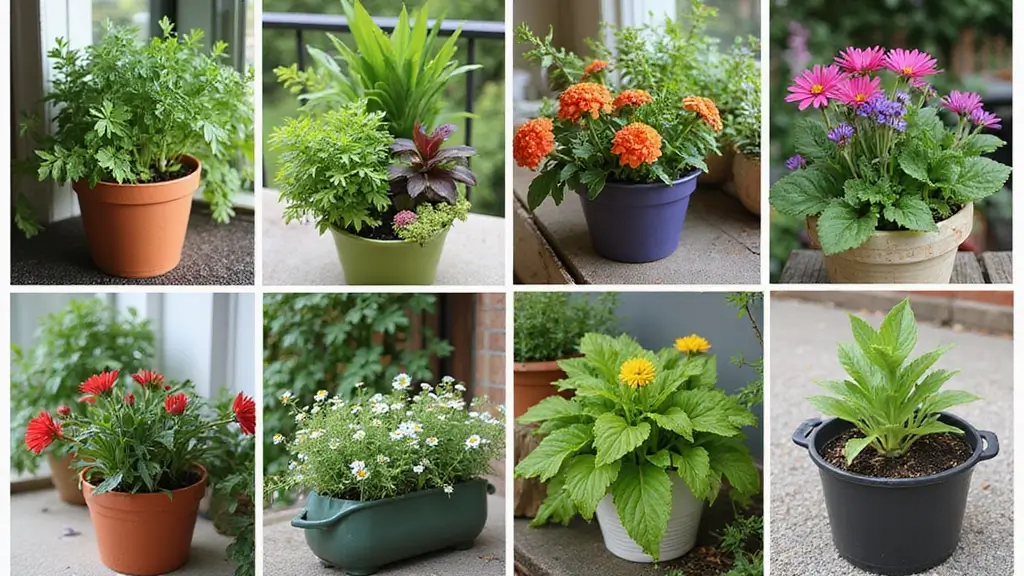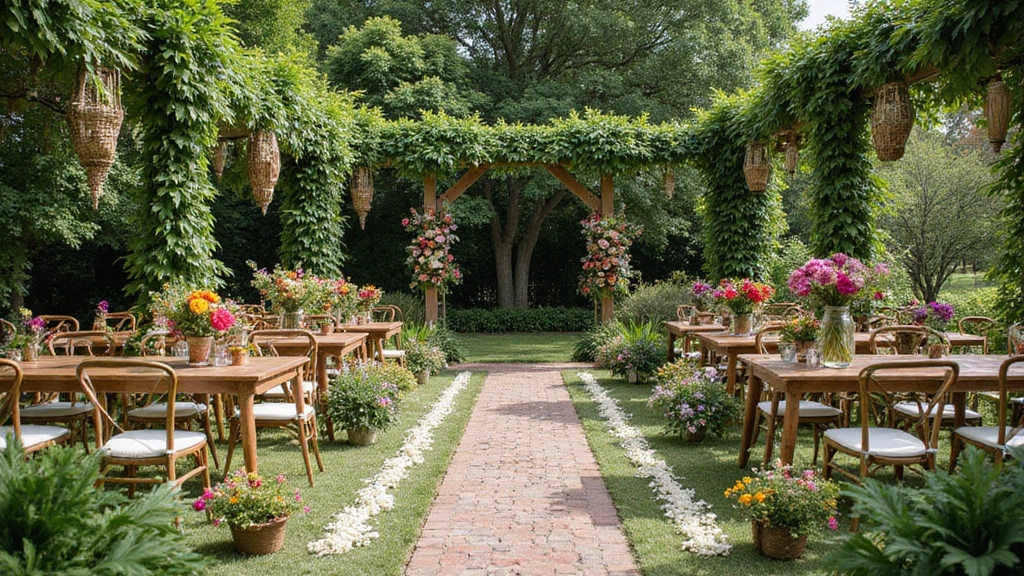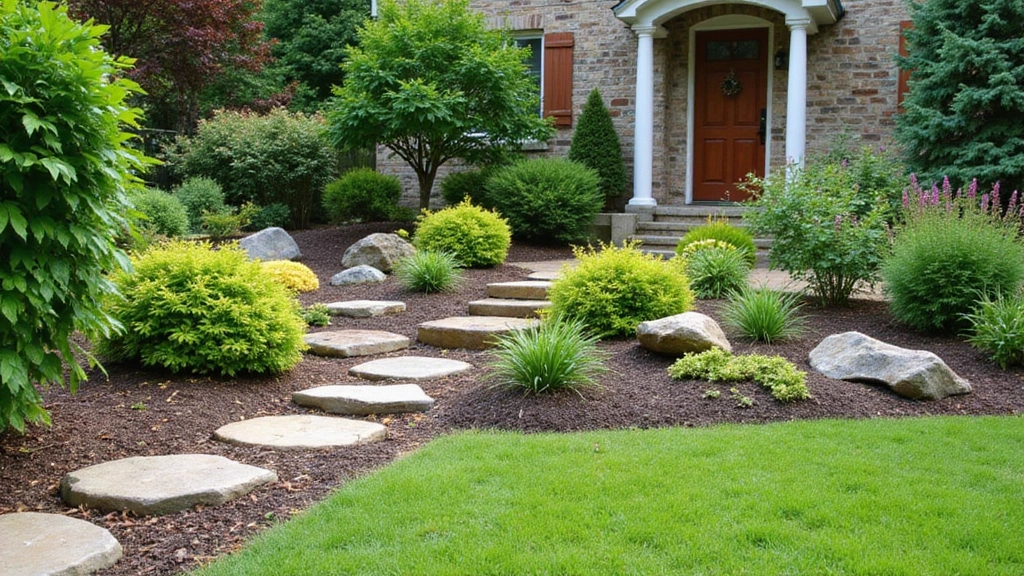Transforming your space into a thriving garden is easier than you think, whether you have a vast backyard or a tiny apartment balcony.
With the rise of vertical gardening, especially in small spaces, you can cultivate plants without sacrificing too much room. Think of vibrant flowers cascading down shelves and fresh herbs growing in unexpected nooks.
In this article, we’ll delve into 26 creative home garden ideas that cater to both beginners and seasoned gardening enthusiasts. From container gardening techniques to sustainable practices, there’s something here for everyone!
1. Start with Vertical Garden Walls
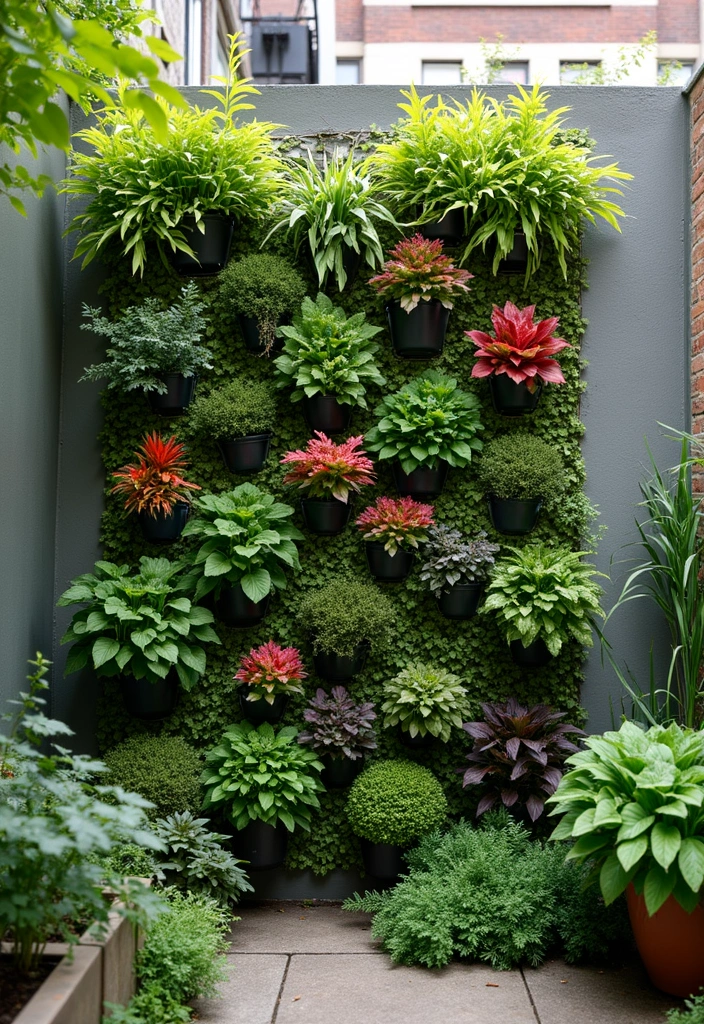
Vertical garden walls are fantastic for maximizing small spaces. These walls can be adorned with a variety of plants, from succulents to herbs. You can use pre-made systems or DIY your own using wooden pallets or trellises. For instance, the Mr. Stacky 5 Tier Stackable Strawberry, Herb, Flower, and Vegetable Planter is a great option if you’re looking for a compact vertical garden solution that can accommodate multiple plants in a tiered format.
Benefits of Vertical Gardening:
– Saves space by using vertical height.
– Improves air quality in your home.
– Provides a stunning visual effect.
Start by selecting a suitable wall that gets enough sunlight. Consider adding a Rain Bird Drip Irrigation Kit for easy watering; this kit is perfect for ensuring your plants receive consistent moisture without the hassle of manual watering. Alternatively, if you prefer a more hands-on approach, ensure you can reach each plant for manual watering.
For those interested in a DIY option, the Idzo Set of 2 Hardwood Outdoor Flower Boxes can be creatively arranged on your vertical wall. These durable acacia wood planters not only have drainage holes to keep your plants healthy, but they also add a touch of style to your garden.
With vibrant color selections and textures, these walls can be customized to fit your style and can even serve as a living piece of art in your home.
2. Utilize Hanging Pots

Hanging pots are another excellent option for small spaces. They not only save floor space but also add a unique touch to any room. You can use hooks or shelves to hang pots filled with your favorite flowers or herbs. For a sturdy solution, consider using NACETURE ceiling hooks for hanging plants, which come in a convenient 3-pack. These metal plant brackets will securely hold your hanging pots, ensuring that they remain safely suspended.
When selecting hanging pots, it’s important to choose lightweight materials to prevent damage. A great option for this is the Melphoe 2 pack self watering hanging planters, which are perfect for both indoor and outdoor use. These pots not only look stylish but their self-watering feature ensures that your plants remain hydrated without much effort on your part.
You should also consider plants that thrive in hanging conditions, like ferns or trailing vines. If you’re interested in growing herbs, an indoor herb garden kit can make a great addition to your setup. This system includes a growing lamp and is perfect for nurturing various herbs right in your home.
Hanging pots can be placed indoors near windows or outdoors in your garden. They create a layered look and allow you to enjoy gardening at different heights while adding charm to your space.
3. Create a Container Garden
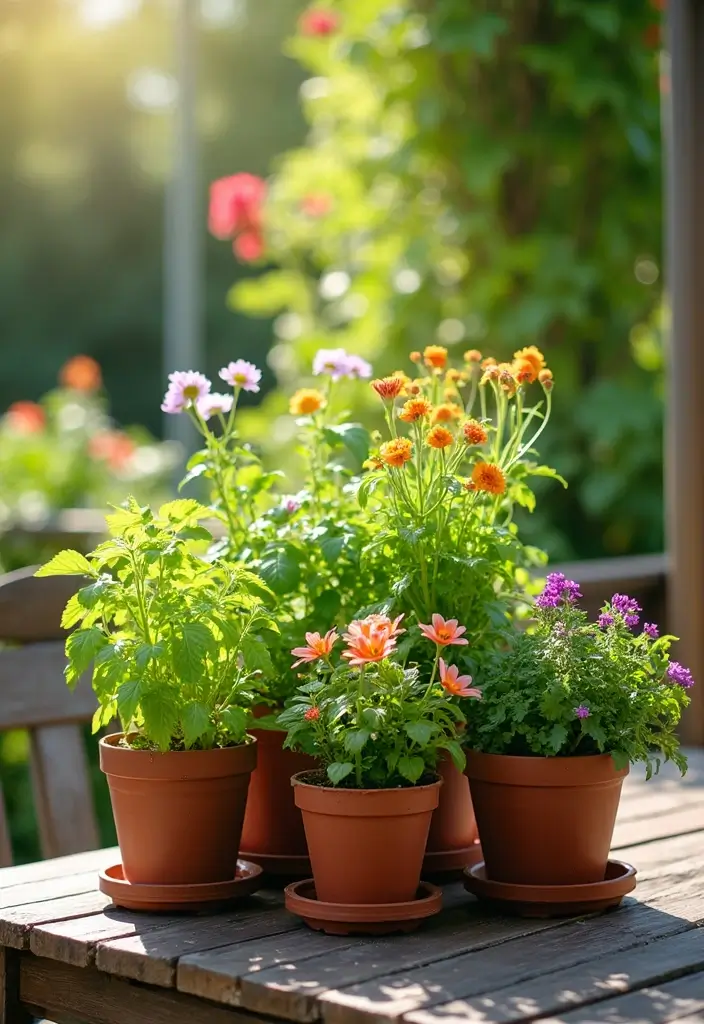
Container gardening is incredibly versatile and ideal for those without a lot of ground space. You can use pots, barrels, or even repurposed items like old teacups or buckets. To get started on your container garden, you’ll want to ensure you have the right essentials.
First, choose containers with drainage holes to prevent overwatering and root rot. Consider using a set like the 30 packs 6.7/5/4 inch reinforced clear nursery pots with drainage hole, which offer a transparent variety pack perfect for your seedlings.
Next, using high-quality potting soil suited for your plants is crucial for their health and growth. You might want to try Back to the Roots 100% organic potting mix, a premium blend that will provide the necessary nutrients for your plants.
Finally, don’t forget about having the right tools to maintain your container garden. A reliable gardening tool set can make all the difference, offering everything you need to nurture your plants effectively.
Mixing flowers with vegetables in containers can bring color and utility to your small space. Plants like tomatoes, peppers, and even strawberries can thrive in these environments, providing a bountiful harvest right at your doorstep.
4. Optimize with Shelving Units
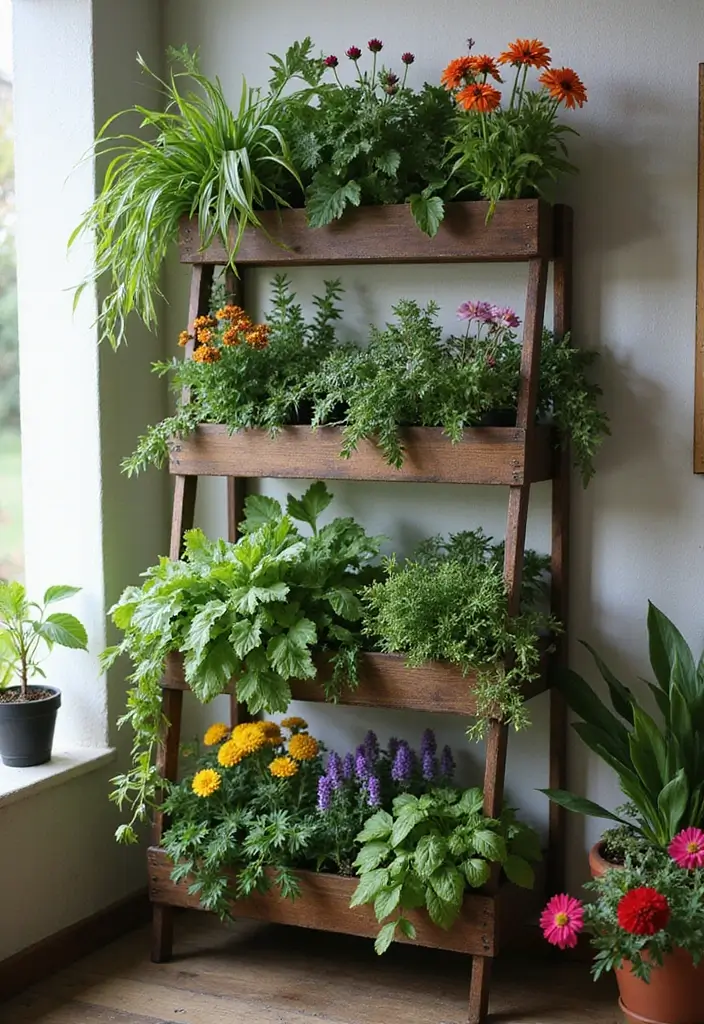
Using shelving units gives you more than just storage; they can be transformed into vertical gardens too. By placing pots on different levels, you can create a stunning display that catches the eye and enhances your home garden.
Tips for Using Shelves:
– Ensure shelves are sturdy enough to hold the weight of the plants. A great option for this is the sturdy wooden plant shelf, which provides a solid base for your pots.
– Mix heights of plants to make the display interesting. You can achieve this by incorporating different sizes of pots, like those in the decorative plant pots set. These modern ceramic pots come in various sizes and add a splash of color to your garden.
– Consider using a color palette that complements your indoor or outdoor space. For a sleek and modern look, the adjustable metal plant stand is an excellent choice. Its versatility allows you to reposition your plants easily while maintaining a stylish appearance.
This approach is perfect for herbs in kitchens or colorful flowers on patios. Not only do they save space, but they also allow for easy access when tending to your plants.
5. Use a Ladder as a Plant Stand
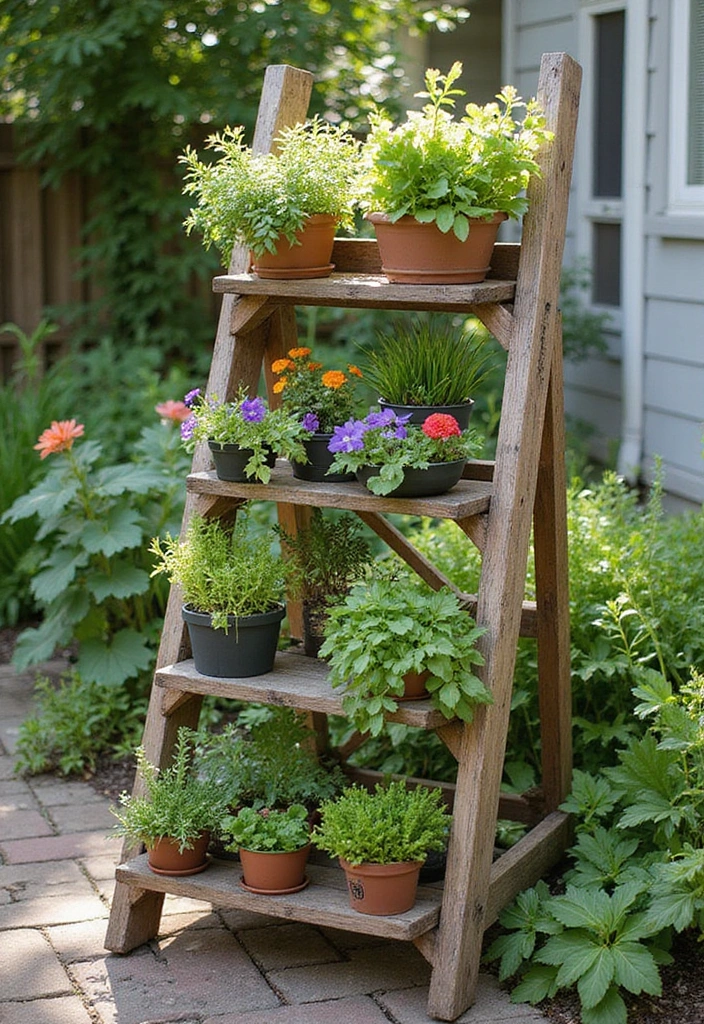
Old wooden ladders can be repurposed into charming plant stands. Lean them against a wall and use the rungs to hold pots of various sizes, creating a delightful display for your greenery.
Why Ladders Work:
– They add a rustic vibe to your garden.
– You can easily move them to catch the sun.
– Each rung can hold different plants, creating visual layers.
To enhance your plant display, consider using a set of pots like the plant pots set. These versatile white plastic planters come in various sizes, making them perfect for fitting on the ladder’s rungs while offering drainage for your plants.
If you’re feeling creative, you can paint the ladder for a pop of color. An ideal choice for this project is outdoor paint for wood, which provides high durability and scratch resistance, ensuring your painted ladder withstands the elements beautifully.
This quirky stand can be a focal point in your garden or on a terrace, bringing life and character to your space while showcasing your favorite plants! For a practical option, consider the wooden ladder plant stand, which offers a tiered design perfect for displaying up to eight potted flowers, enhancing your garden’s appeal.
6. Start a Herb Spiral
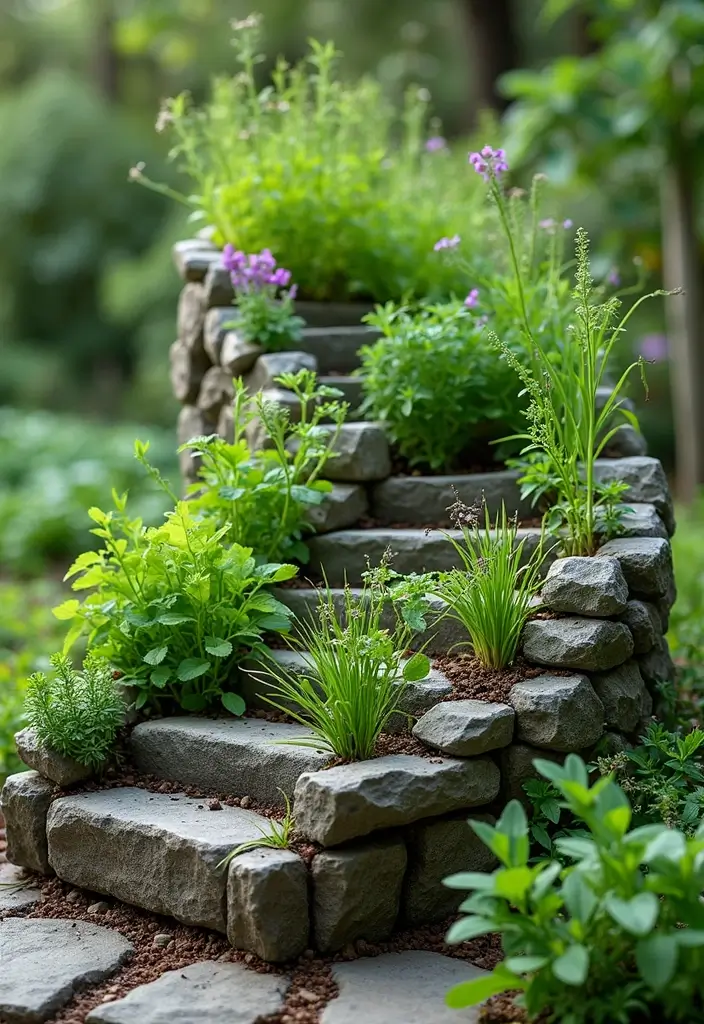
Herb spirals are a unique way to cultivate herbs in a compact area. This structure allows you to grow plants in varying heights, providing different microclimates for each herb.
Building an Herb Spiral:
– Start with a circular base and build upwards using stones or bricks.
– Plant herbs according to their sunlight and watering needs. For this, you can use an herb spiral kit, which includes non-toxic pots and organic seeds, perfect for setting up your spiral garden.
– Consider using the top for sun-loving herbs like rosemary and the base for moisture-loving ones like mint. To ensure healthy growth, you’ll want to start with a quality soil mix, such as garden soil mix for herbs, designed specifically for container gardening.
This not only saves space but also makes it easier to manage your herb garden, as you’ll have all your favorites in one spot, ready for culinary exploration! Make sure to equip yourself with a reliable gardening tools set to help you with planting and maintaining your spiral, ensuring a successful and enjoyable gardening experience.
7. Implement a Green Roof
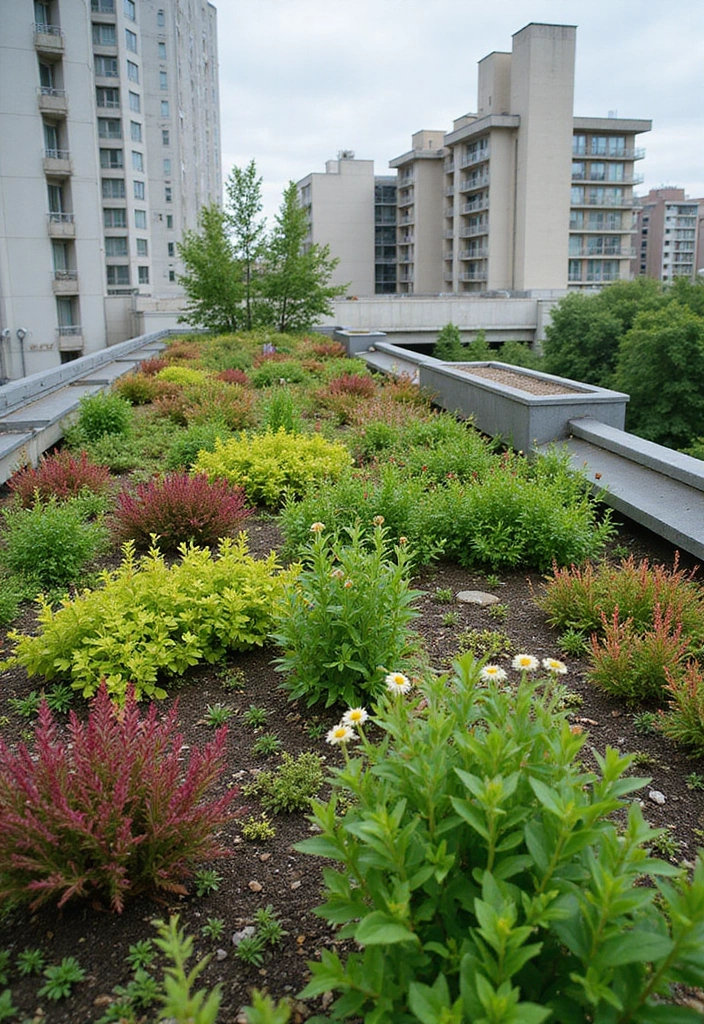
If you’re really limited on space, a green roof is an innovative option. This involves growing plants on rooftops, turning them into a miniature garden paradise.
What to Consider for a Green Roof:
– Ensure your building can support the weight of the soil and plants.
– Choose low-maintenance, drought-resistant plants like sedum plant varieties, which thrive in various conditions and require minimal care.
– Consider access for maintenance or enjoying the space.
Not only does a green roof provide fresh produce, but it also helps with insulation and can reduce energy costs. To create a successful green roof, starting with the right materials is essential. Using a quality lightweight potting soil can promote healthy plant growth without adding excessive weight to your roof structure. Additionally, for those looking to delve deeper into the design and implementation of a green roof, the book Green Roof Systems: a Guide to the Planning, Design and Construction of Building Over Structure provides valuable insights and guidance.
Plus, you’ll enjoy a stunning view!
8. Try Out a Pallet Garden
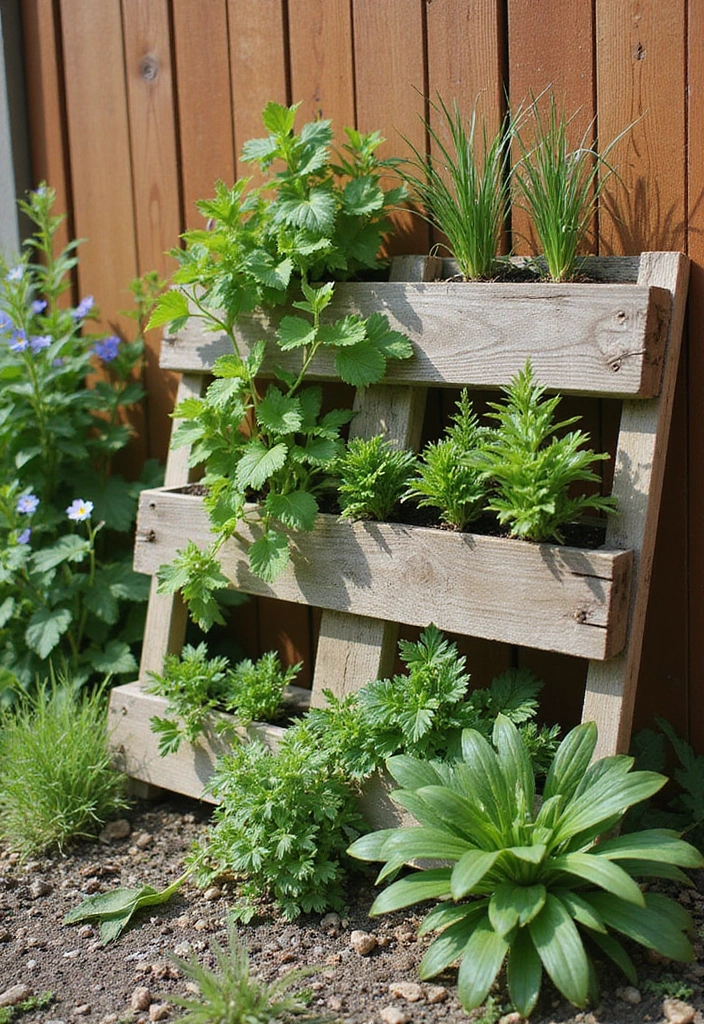
Pallet gardens offer a rustic, eco-friendly way to garden vertically. Old pallets can be transformed into unique planters, filled with soil and vibrant plants.
Steps to Create a Pallet Garden:
1. Choose a sturdy pallet and sand it down to avoid splinters.
2. Line the back with landscaping fabric to hold soil in place effectively.
3. Fill the pallet with potting soil mix, perfect for nurturing your favorite herbs and small flowers.
Pallet gardens work best for herbs and small flowers. To enhance your gardening experience and protect your hands, consider using gardening gloves while planting and maintaining your garden. Secure your pallet garden against a wall or fence for an elegant look that doesn’t take up much ground space.
9. Create a Window Box Garden
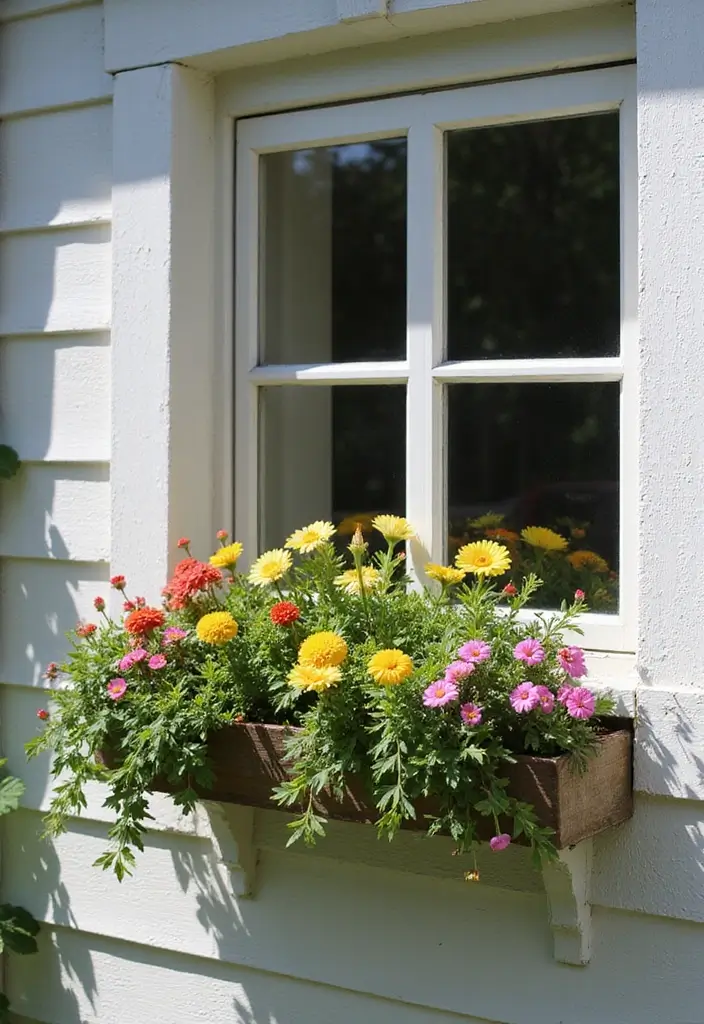
Window boxes are a charming way to bring greenery into your home. They can be installed under windows or on balconies, adding a splash of color to the façade while serving as a perfect solution for limited space.
Designing Your Window Box:
– Choose the right size to fit your window.
– Select plants that tolerate the conditions where they’ll be placed (sunlight, wind).
– Mix flowers for visual appeal or herbs for culinary use.
To get started, consider using the Mayne Fairfield 3-Foot Window Box, which is a self-watering and weather-resistant planter designed for outdoor use. It’s durable and perfect for displaying your favorite flowers.
When filling your window box, the right soil is essential for healthy plant growth. The Miracle-Gro Potting Mix is ideal for container gardening, suitable for a variety of plants including flowers, vegetables, annuals, and perennials. This potting mix feeds your plants for up to six months, ensuring they thrive in their new environment.
To maintain your plants and keep them looking their best, a good set of tools is invaluable. The Fiskars House Plant Starter Tool Gift Set includes a bypass pruner, trowel, cultivator, and garden gloves, making it an essential kit for any indoor gardening enthusiast.
These window boxes can be filled with vibrant annuals or beautiful perennials, providing an ever-changing display depending on the season.
10. Use Upcycled Containers
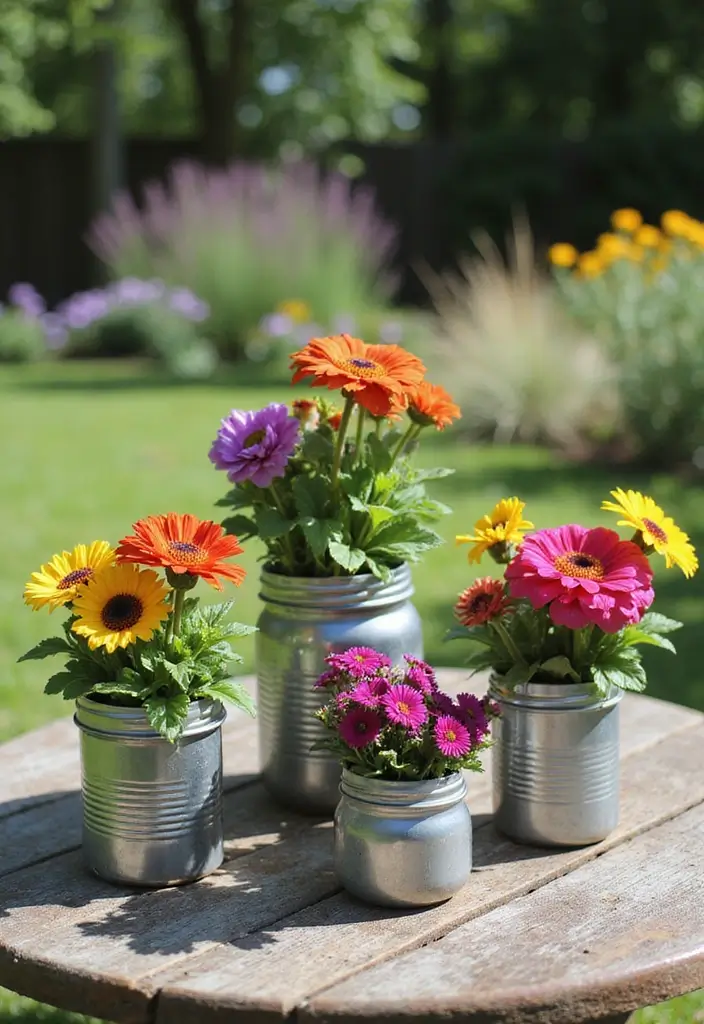
Get creative with your home garden by using upcycled items as plant containers. Old jars, cans, and tubs can all be transformed into quirky planters. To get started, it’s essential to have the right tools and materials.
One handy tool is the drill with drill bits, which allows you to easily create drainage holes in your containers, ensuring your plants have the proper conditions to thrive.
After preparing your containers, make sure to clean them thoroughly before planting. For a personalized touch, consider using non-toxic paint for decorating your planters. This acrylic paint set offers a variety of colors, making it easy to add character and creativity to your garden.
Lastly, don’t forget to protect your hands while working. A good pair of gardening gloves will provide the grip and comfort you need while handling containers and planting.
This not only saves money but also adds character to your garden. You can create a fun theme or mix different styles for an eclectic look.
11. Embrace a Succulent Garden
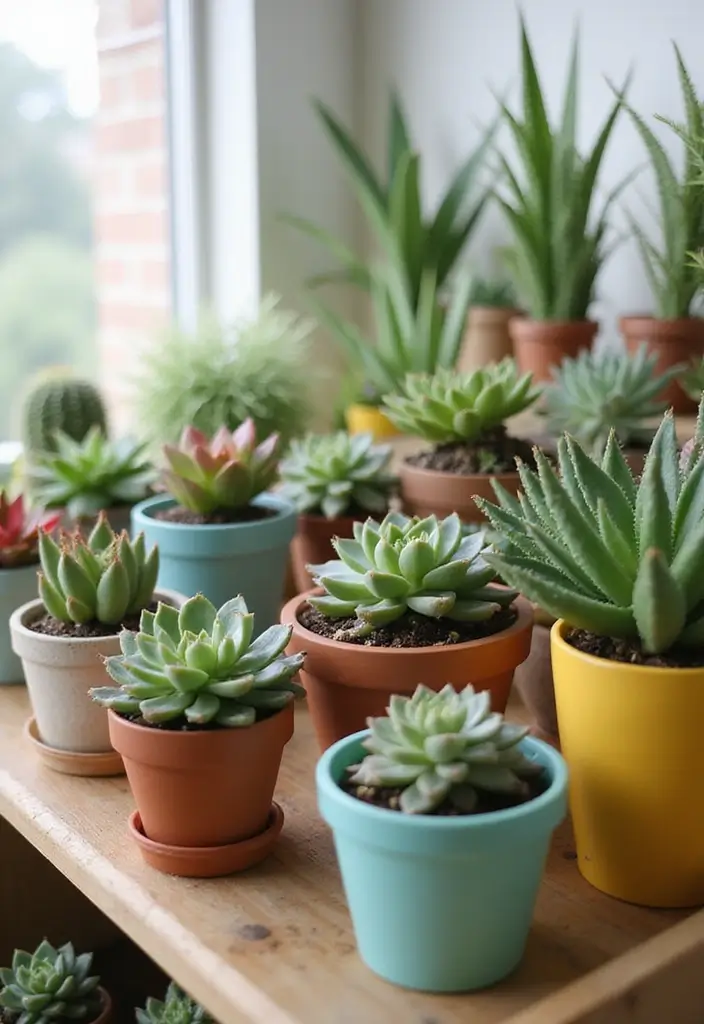
Succulents are ideal for beginners, as they require minimal care and thrive in small spaces. They come in various shapes, sizes, and colors, making them perfect for an eye-catching display.
Creating a Succulent Garden:
– Use shallow containers like the HC Companies 8 inch round plastic succulent capri bowl, which encourages healthy growth and allows your plants to flourish.
– Mix different varieties, such as those found in the Altman Plants assorted succulent plants (20 pack), for a vibrant look that adds diversity to your garden.
– Place them in areas with plenty of sunlight, ensuring they thrive to their full potential.
Succulents also make great gifts and can be arranged artistically using Yesland ceramic hanging mini flower planters, perfect for displaying them on walls or ceilings. Their low maintenance makes them ideal for busy gardeners!
12. Grow Climbing Plants
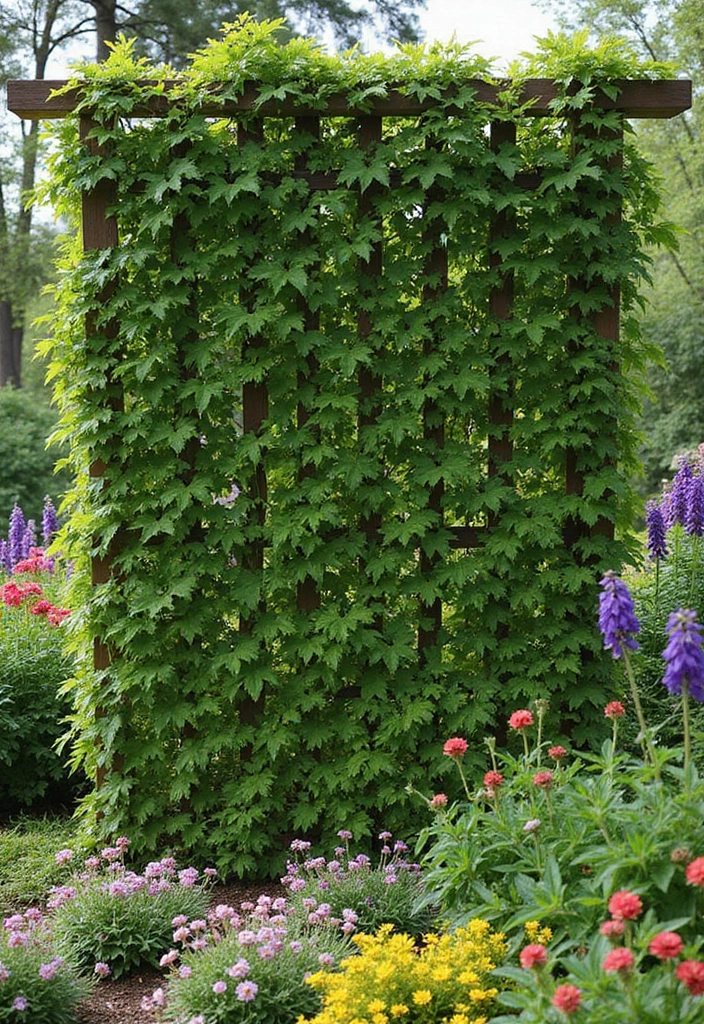
Climbing plants can turn a boring wall or fence into a lush green canvas, making them perfect for vertical gardening while adding privacy to outdoor spaces. To support your climbing plants effectively, you might consider using trellises, stakes, or fences for optimal growth.
A great option for a trellis is the Adorox 7.8ft garden arch trellis, which adds an elegant touch to your garden while providing sturdy support for climbing plants like sweet peas and morning glories. This metal arch frame not only enhances the aesthetic of your outdoor area but also allows your plants to thrive.
For those looking for more flexibility, extendable plant stakes are a fantastic choice. These stakes can be adjusted from 17.9 inches to 42.3 inches, making them suitable for a variety of climbing plants, including tomatoes and vines. They come with clips to keep your plants secure as they grow.
If you want to maximize your gardening space, consider the Mr. Stacky 5 tier stackable planter. This vertical garden planter is perfect for herbs, flowers, and even strawberries, allowing you to grow a variety of plants in a compact area. It’s ideal for creating a beautiful natural backdrop while covering up unsightly structures in your garden.
With these tools at your disposal, you can transform your outdoor space into a cozy and inviting environment, filled with the beauty of climbing plants.
13. Incorporate a Rain Garden
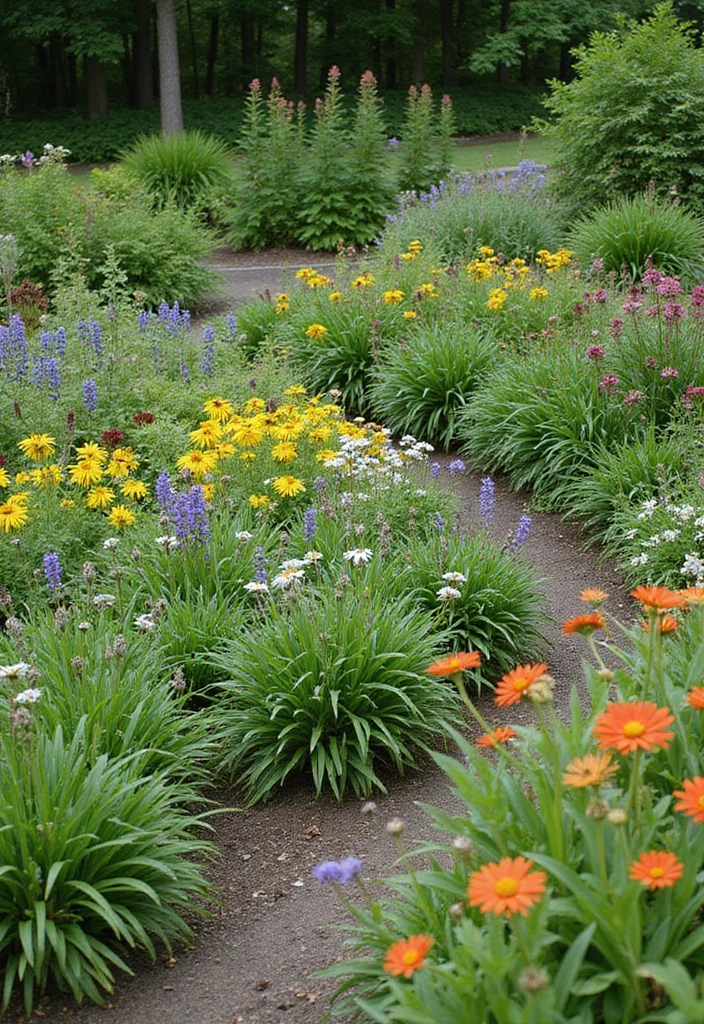
Rain gardens are designed to capture rainwater runoff, helping to reduce erosion while providing a beautiful habitat for plants. They’re a sustainable gardening practice that’s both functional and attractive.
Steps to Create a Rain Garden:
1. Choose a low spot in your yard to collect rainwater.
2. Select native plants that thrive in wet conditions, such as those found in a native plant seed mix. This California wildflower mixture comes in a bulk 1-ounce packet containing over 7,000 native seeds that are open-pollinated and non-GMO.
3. Create a slight depression to hold water.
To ensure your rain garden thrives, consider enhancing your soil with garden soil amendments like Farmer’s Secret Soil Revitalizer. This organic dirt health booster is great for fall application, helping to improve your soil’s overall health.
Additionally, if you’re concerned about efficiently watering your rain garden, a rain garden kit like the Rain Bird GARDENKIT can provide an effective drip irrigation solution. This kit is specifically designed for raised bed gardens and ensures that your plants receive the right amount of water.
Incorporating a rain garden not only supports local wildlife and attracts butterflies but also contributes to a healthier ecosystem while adding a unique landscape feature to your home garden.
14. Set Up a Pollinator Garden
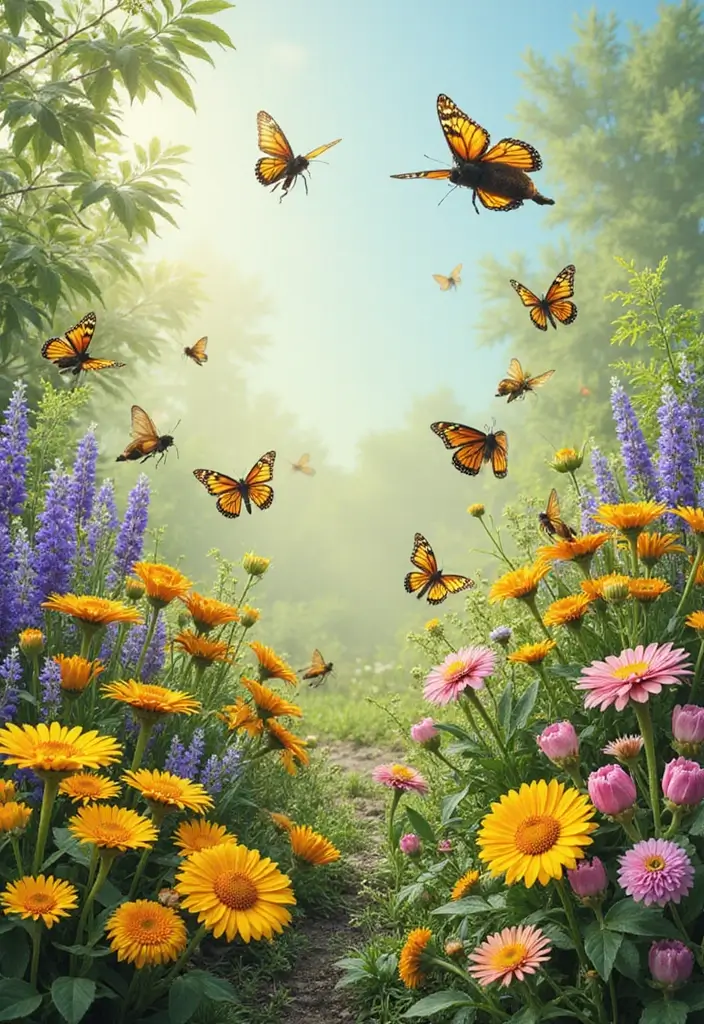
Creating a pollinator garden is a fantastic way to support the environment while beautifying your space. By planting specific flowers, you can attract bees, butterflies, and other beneficial insects.
A great starting point for your pollinator garden is the Pollinator Garden Seed Mix from Burpee. This seed mix includes 18 varieties of non-GMO flower seeds that are specifically chosen to draw in pollinators. By incorporating these seeds into your garden, you’ll cultivate a diverse and vibrant environment that supports the essential role of bees and butterflies.
You can also consider planting lavender for its wonderful fragrance and appeal to bees, as well as milkweed, which is vital for monarch butterflies. Additionally, coneflowers and asters are excellent choices due to their nectar-rich blooms.
By selecting a diverse array of colors and scents, not only will you create a stunning garden, but you’ll also help enhance pollinator populations, ensuring a thriving ecosystem.
Transform your home garden into a vibrant pollinator haven! By choosing flowers like lavender and milkweed, you’ll not only beautify your space but also create a sanctuary for bees and butterflies. Let nature thrive in your garden!
15. Discover Edible Landscaping
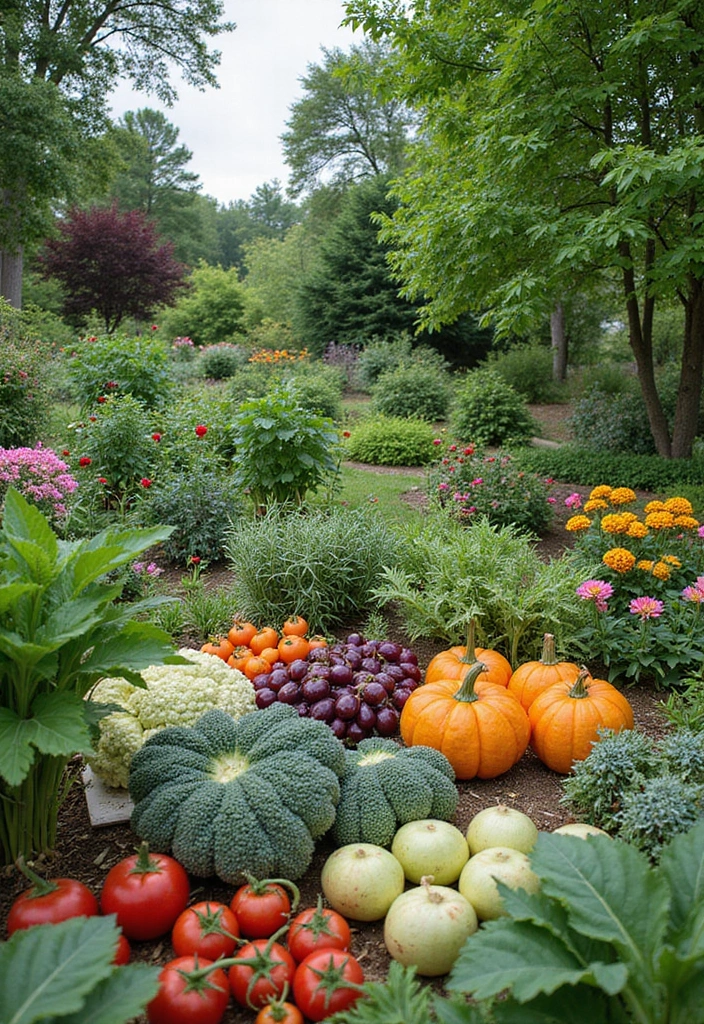
Edible landscaping combines beauty with functionality, allowing you to grow fruits, vegetables, and herbs intermingled with ornamental plants. It’s a practical way to enhance your garden and harvest fresh food right at home.
To get started, consider using a raised garden bed kit like the Land Guard Galvanized Raised Garden Bed Kit. This sturdy option provides the perfect environment for your plants while keeping them organized and easy to access. You can design your garden by planting berry bushes among perennial flowers, which will not only look good but also yield delicious berries.
For a burst of color, incorporate ornamental kale and chard into your edible garden. To ensure you have a variety of plants to choose from, check out the organic vegetable seeds variety pack from Back to the Roots. This assortment includes heirloom, non-GMO seeds that are guaranteed to grow, providing you with a diverse selection to enhance your landscape.
Finally, having the right tools can make a significant difference in your gardening experience. A gardening tools set is essential for maintaining your garden effectively. This heavy-duty, rust-proof set will help you cultivate your edible landscape with ease.
This approach not only looks aesthetically pleasing but also provides you with delicious food straight from your garden!
16. Try Vertical Hydroponics
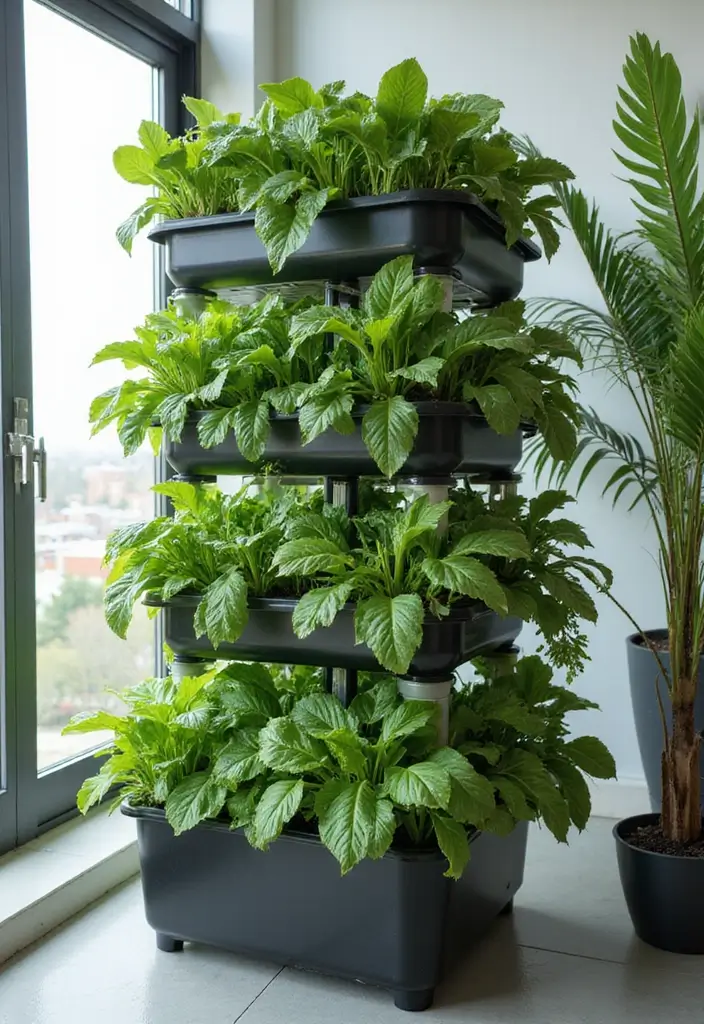
Vertical hydroponics is a groundbreaking gardening method that allows you to grow plants without soil by using nutrient-rich water instead. This method takes up minimal space and can yield a high amount of produce, making it perfect for both beginners and seasoned gardeners.
Benefits of hydroponics:
– Faster plant growth due to optimized conditions.
– Less land and water usage compared to traditional gardening.
– Year-round cultivation possible indoors or outdoors.
To get started with vertical hydroponics, consider investing in a reliable system like the Ahopegarden Indoor Garden Hydroponics Growing System. This kit includes 10 pods for plant germination and features an LED grow light, allowing you to cultivate herbs and vegetables right on your countertop.
Once you have your system set up, don’t forget about nutrition. Using a quality nutrient solution is essential for healthy plant growth. The TPS NUTRIENTS Liquid Plant Food is specifically designed for use in hydroponic systems, ensuring your plants have the essential nutrients they need to thrive.
Additionally, proper lighting is crucial for indoor hydroponics. The GooingTop LED Grow Light provides a full spectrum of light that supports plant growth, and its timer function makes it easy to maintain a consistent light schedule.
Setting up a vertical hydroponic system may require some initial investment, but with the right tools and nutrients, the rewards of fresh greens and the joy of gardening without soil are well worth it!
17. Cultivate a Zen Garden
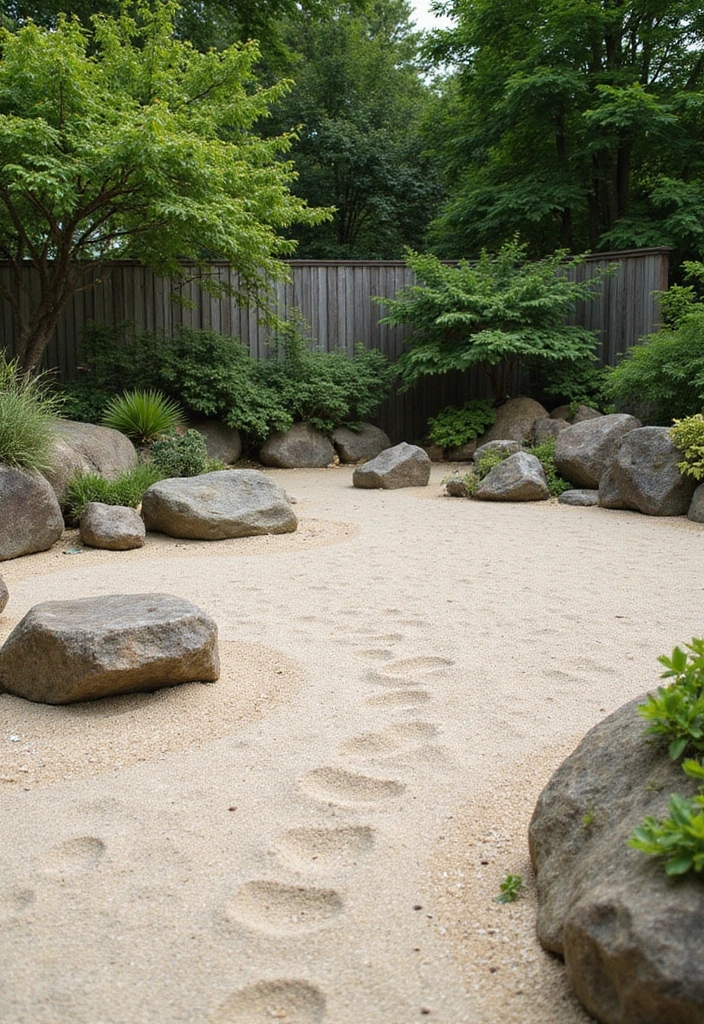
Zen gardens focus on creating a tranquil space using sand, rocks, and minimal plants, making them perfect for meditation areas while adding serene beauty to your garden.
To create your own Zen garden, consider using Zen garden sand to form patterns that symbolize water. The fine white sand can enhance the visual appeal of your garden while inviting calmness as you rake it into harmonious designs. Incorporating rocks is another key element; garden rocks can be used to represent mountains or islands, providing a natural contrast to the sand and creating focal points within your garden layout.
To add a touch of green, consider using moss plants, which offer a minimalistic yet lush appearance that fits perfectly in the Zen aesthetic.
Maintaining a Zen garden can be meditative in itself, providing a peaceful retreat in your home environment where you can reflect and relax.
18. Design a Fairy Garden
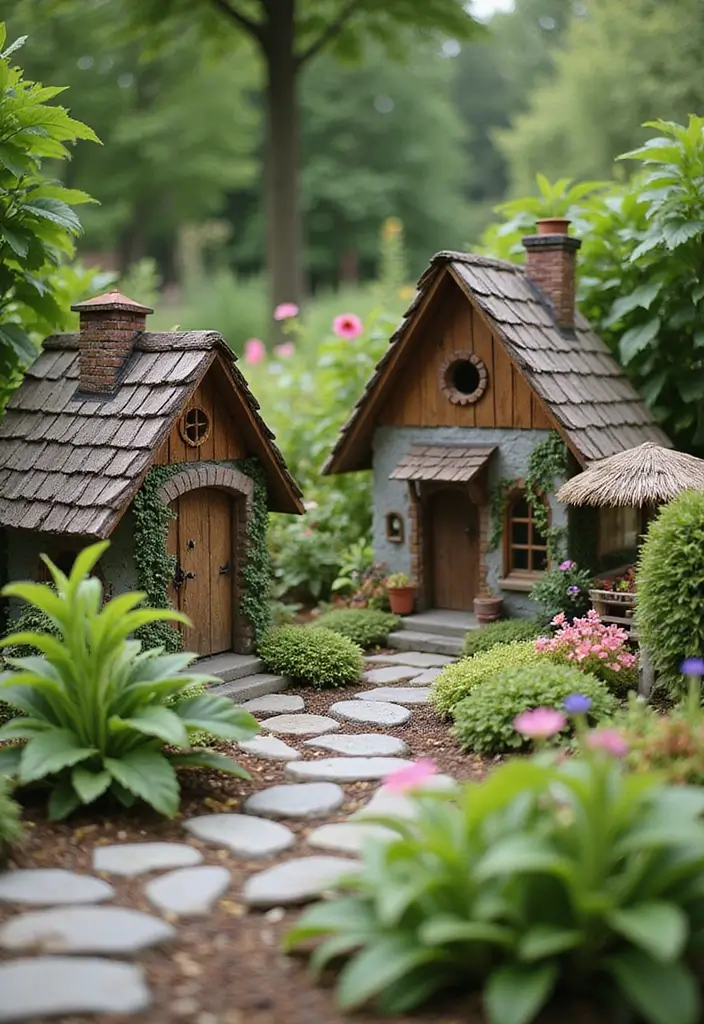
Fairy gardens are whimsical and magical, allowing you to create tiny landscapes that spark imagination. They’re especially fun for children and can be made in small containers or as part of your larger garden.
Tips for Fairy Gardens:
– Use miniature accessories like tiny houses, furniture, and figurines. A fantastic option is the Miniature Fairy Garden Accessories Set, which includes 100 assorted resin animals and miniature figurines that can bring your fairy garden to life.
– Choose smaller plants like mosses and succulents to fit the scale. Consider the Succulent Plant Collection, featuring a variety of live assorted potted succulents that are perfect for creating a charming, low-maintenance garden.
– Incorporate pathways made of pebbles or sand. For this, a bag of Decorative Pebbles for Garden Pathways is ideal, adding a natural touch with its polished stones that can guide little fairy feet through your magical landscape.
This playful approach can ignite creativity and encourage kids to get involved in gardening!
19. Host a Seed Swap Party
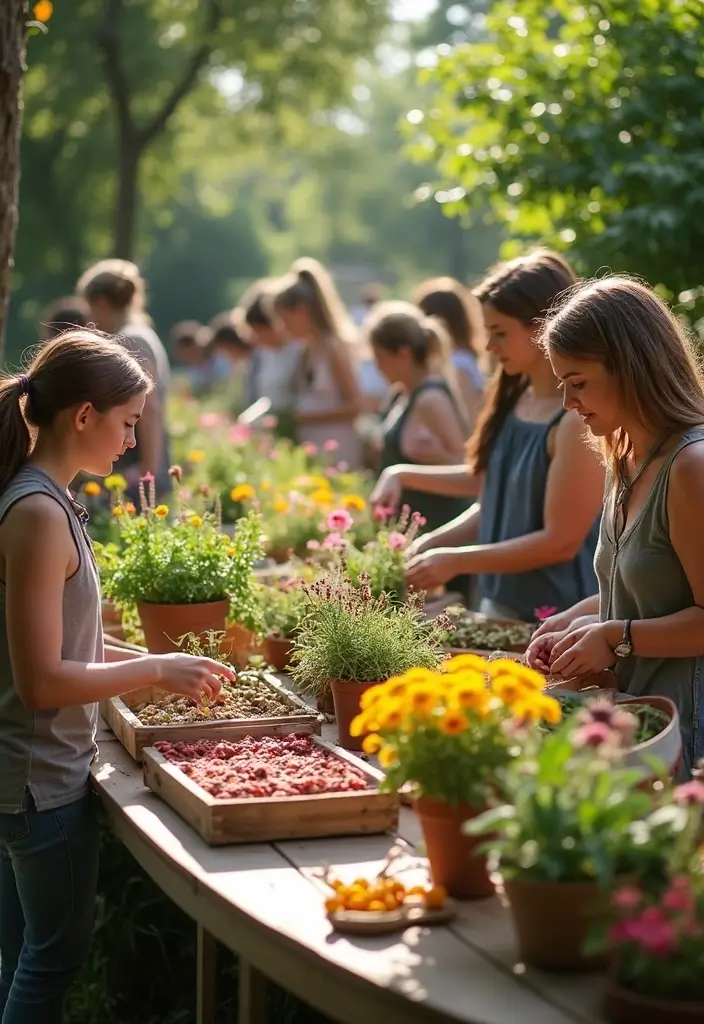
Engaging with your local community can be a fun way to expand your garden. Host a seed swap where neighbors can exchange excess seeds from their gardens.
Benefits of a seed swap:
– Variety of plants to choose from without spending money.
– Build connections with fellow gardening enthusiasts.
– Share gardening knowledge and experience.
To make the most of your seed swap, consider organizing your seeds with a seed storage container. This 60 slots seed storage organizer not only helps you keep your seeds safe with its metal construction and lid but also allows for easy categorization with its seed envelopes and labels.
Additionally, you might want to keep track of the plants you’ve exchanged and any tips you’ve learned from your neighbors in a garden journal. The Clever Fox Gardener’s Journal serves as a guided notebook to log your gardening journey over five years, making it a valuable resource for both beginners and seasoned gardeners.
Plus, hosting a seed swap is an awesome way to promote biodiversity and encourage local food production!
20. Explore Companion Planting
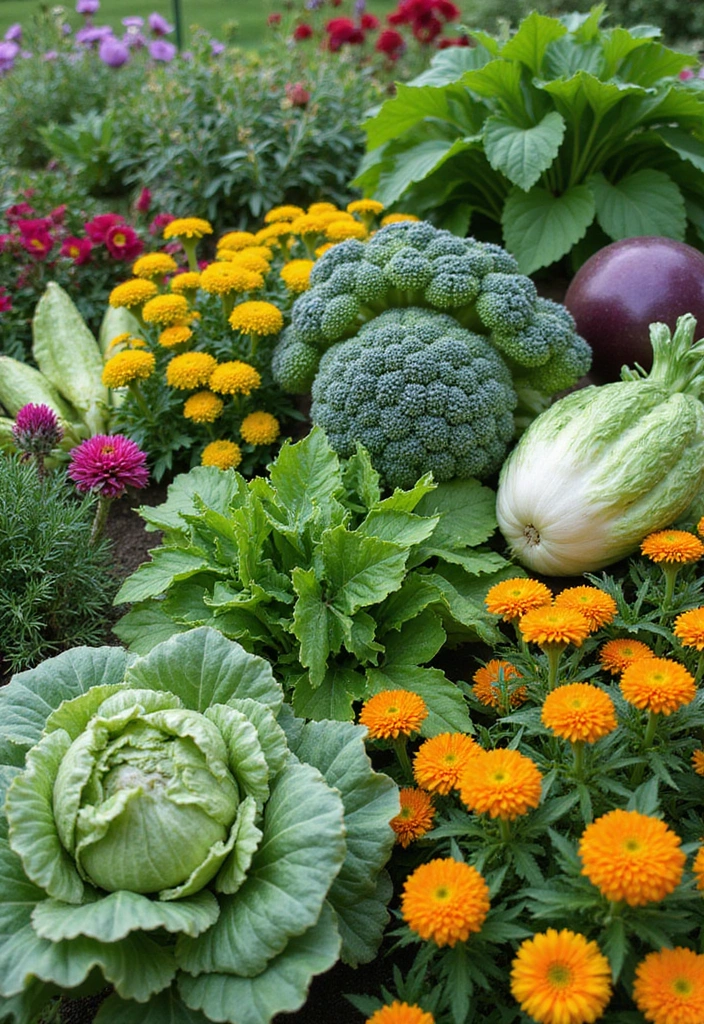
Companion planting involves growing different plants together that benefit each other, enhancing growth, deterring pests, and improving yields. It’s a great strategy for both novice and experienced gardeners.
Examples of companion plants:
– Tomatoes and basil for enhanced flavors.
– Carrots and onions to deter pests.
– Marigolds and almost any vegetable for pest control.
To make the most of your companion planting efforts, consider using the companion planting guide book. This handy tool will help you understand which plants thrive together and how to arrange them effectively in your garden.
Additionally, to protect your plants from pests while maintaining an organic approach, try using organic pest control spray. Made from natural mint oil, this spray will deter unwanted insects without harming your plants or the environment.
This method is not only practical but also maximizes the use of space in your garden, making it a clever choice for smaller areas.
Companion planting is like hosting a garden party – the right combinations can enhance growth and flavor, while keeping pests at bay. Discover the magic of plant friendships in your home garden ideas!
21. Create a Butterfly Garden
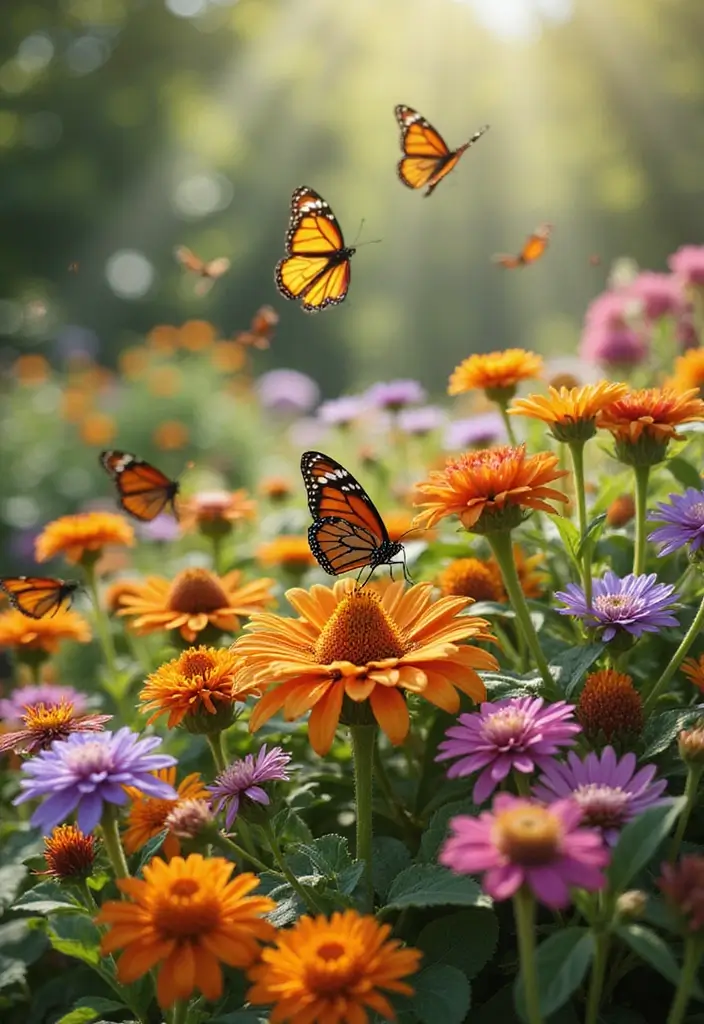
A butterfly garden is a delightful way to attract these beautiful creatures to your space. By planting specific flowers and providing suitable habitats, you can create a haven for butterflies.
To get started, consider using a butterfly garden seed kit that includes milkweed seeds, which are essential for catering to caterpillars. This kit offers a variety of perennial flower seeds that will thrive in your garden and attract a range of pollinators. Additionally, planting lantana will provide nectar, while aster and coneflower will ensure long-lasting blooms.
To further enhance your butterfly garden, adding a butterfly feeder can make your garden even more inviting. This outdoor feeder comes with a 12 oz. Nectar capacity and fruit trays, helping you provide a consistent food source for visiting butterflies.
With proper care and these helpful additions, your butterfly garden will bring enchanting visitors and serve as a colorful focal point in your home garden!
Invite nature into your home garden with a butterfly garden! Planting favorites like milkweed and coneflowers will not only attract these stunning visitors but also create a vibrant space that delights the senses.
22. Create a Scent Garden
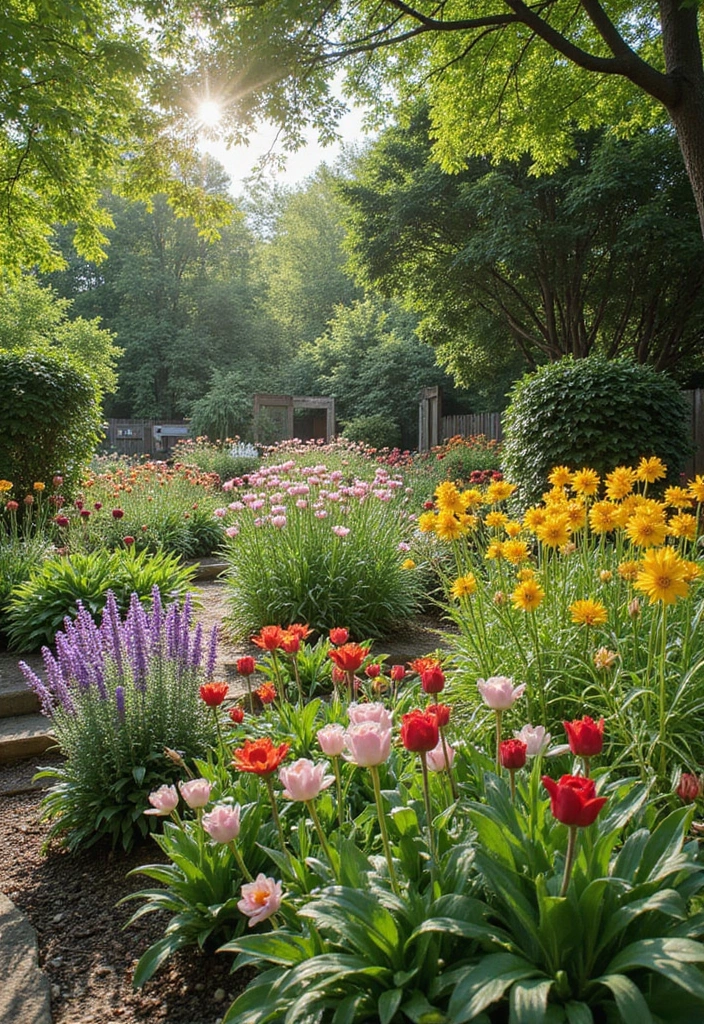
A scent garden is an aromatic delight that engages the senses. This type of garden focuses on plants that produce delightful fragrances, offering a calming and inviting atmosphere.
To enhance your scent garden, consider adding a few specific plants that are sure to elevate your outdoor space. For instance, the lavender plant is renowned for its calming scent and can serve as a natural sleep enhancer, making it a perfect addition for relaxation. If you enjoy romantic evenings, you might want to include jasmine plants. Their sweet fragrance can transform your garden into a serene hideaway, perfect for winding down at the end of the day.
Additionally, herbs like rosemary and mint not only provide a refreshing aroma but can also be used in your cooking. To get started with these versatile plants, consider the herb garden starter kit, which includes seeds for ten kitchen herbs. This kit makes it easy to cultivate your own fresh herbs right at home, ensuring you have a fragrant and functional garden.
Setting up a scent garden can provide enjoyment year-round and can even be therapeutic after a long day!
23. Explore Wildlife Gardening
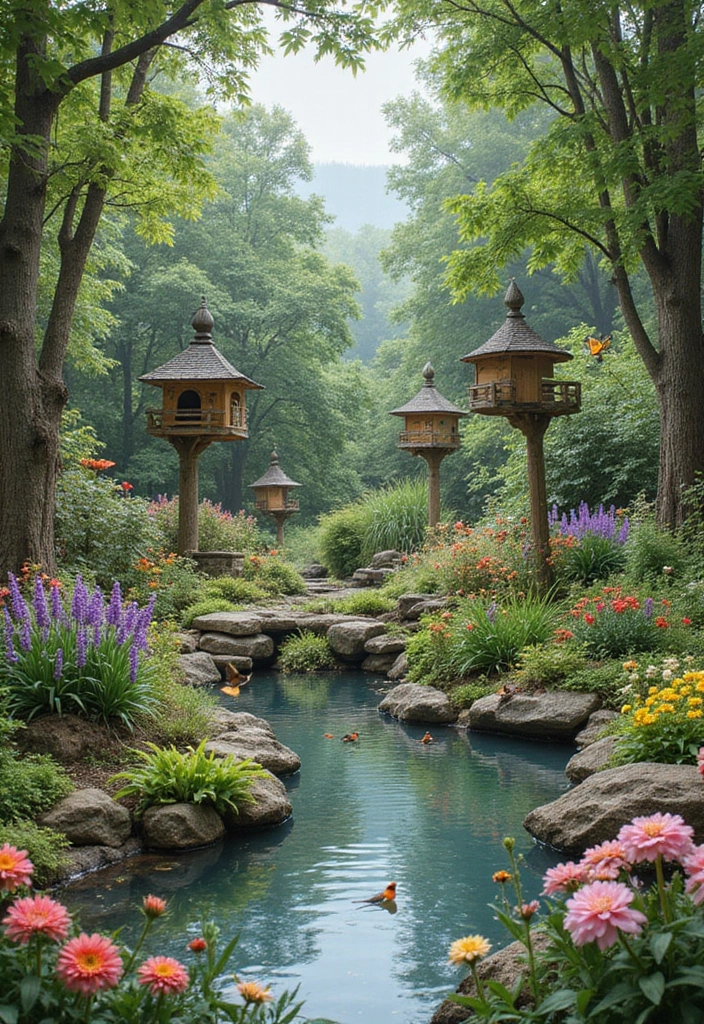
Wildlife gardening is about creating a welcoming environment for local wildlife. By planting native species and providing food, water, and shelter, you can create a thriving ecosystem right at home.
Steps for wildlife gardening:
– Use native plants to attract local birds and insects.
– Install a bird feeder to provide food for visiting birds and help sustain their populations.
– Set up a bird bath to offer hydration and a place for birds to clean themselves.
– Create shelter with shrubs and brush piles.
This approach not only helps nature but also enriches your gardening experience, allowing you to observe the beauty of wildlife in your own garden.
24. Use Mulch for Soil Health
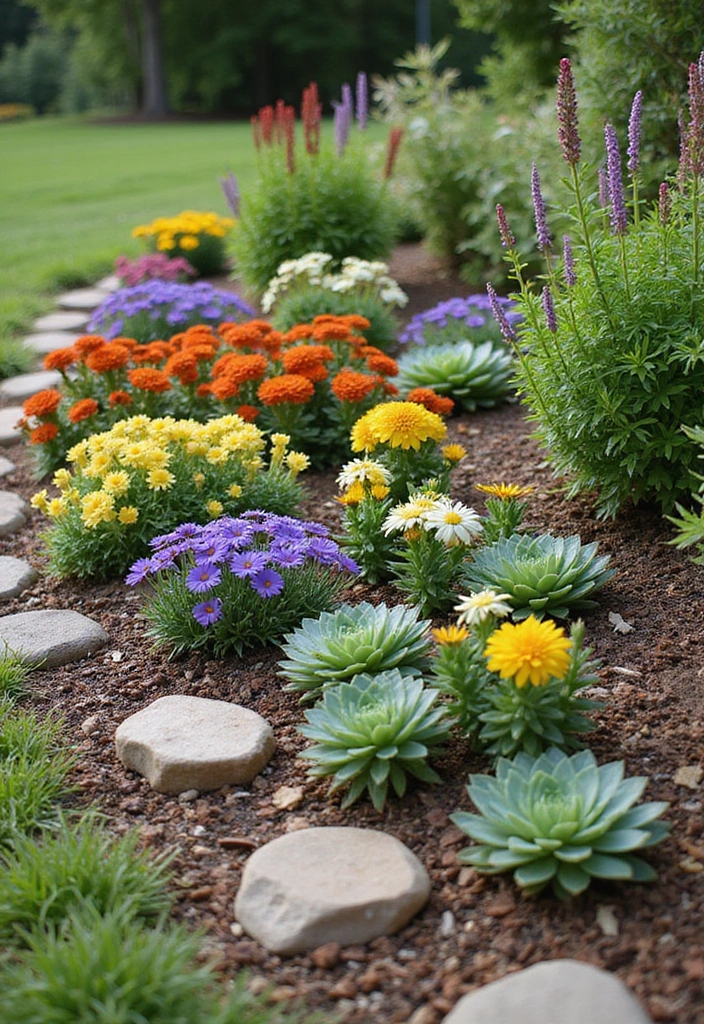
Mulching is an often-overlooked strategy to improve soil health and retain moisture in your garden. It can also suppress weeds and enhance the aesthetic of your garden beds. To get started, consider using Back to the Roots 25.7qt (1 Cubic ft) organic premium mulch, which consists of wood chips that not only enrich the soil but also create a natural look for your garden.
For those who prefer a more modern vibe, inorganic materials like gravel can be a great option. A product like 2LB succulent and cactus gravel pebbles offers decorative polished stones that can beautifully complement your landscaping while serving as effective mulch.
Applying mulch can significantly benefit your plants, keeping them healthy and thriving, especially during dry spells. To make the mulching process easier, consider using a mulching fork, like the 10 tines pitch fork with a non-slip handle. This heavy-duty tool is perfect for spreading mulch evenly and ensuring it stays in place, providing your garden with the nourishment and protection it needs.
25. Implement Sustainable Practices
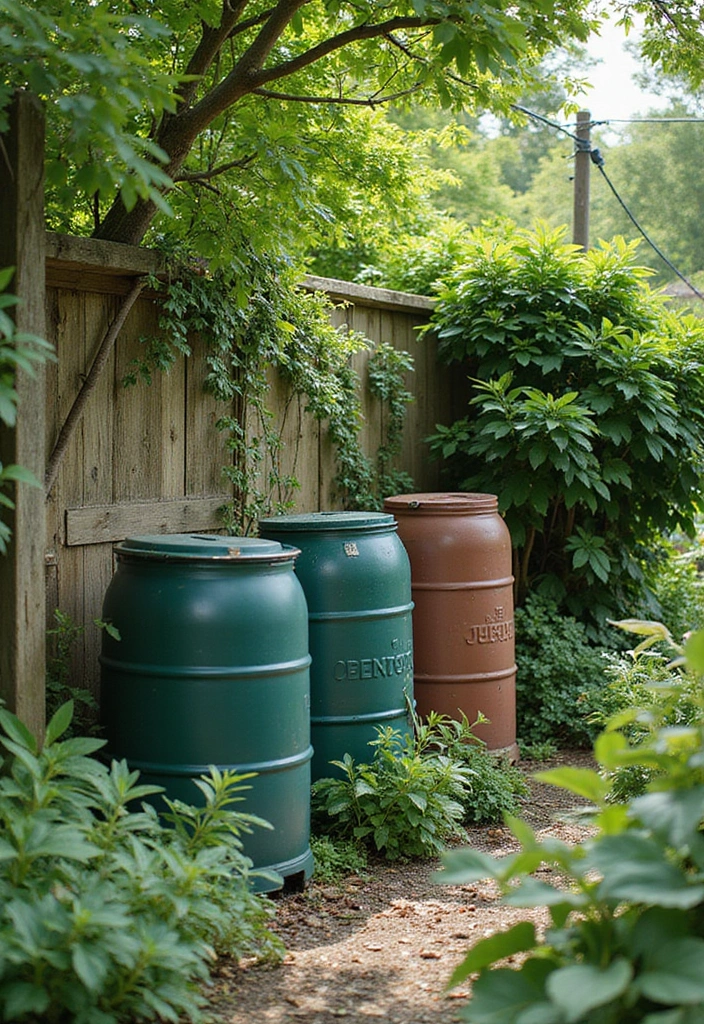
Sustainable gardening practices are crucial for maintaining a healthy environment. They promote biodiversity, conserve resources, and reduce the impact of gardening on nature.
Ways to garden sustainably:
– Composting kitchen scraps with a compost bin not only enriches your soil but also reduces kitchen waste. The Utopia Kitchen Compost Bin is perfect for countertops, making it easy to collect scraps while keeping your space tidy.
– Using rain barrels to collect water for irrigation helps conserve precious resources. This 50-gallon ECO rain barrel is made from 100% recycled plastic and is designed for effective rainwater collection, ensuring you have water readily available for your garden.
– Planting cover crop seeds is an excellent way to prevent soil erosion and improve soil health. The no-till garden farm and garden cover crop mix includes a blend of seeds like hairy vetch and daikon radish, which can enhance your garden’s ecosystem.
By adopting these practices, you contribute to a greener planet while enjoying the benefits of gardening at home.
Sustainable gardening isn’t just a trend; it’s a necessity! Every compost bin and rain barrel helps create a greener planet, proving that our small home garden ideas can have a big impact.
26. Keep a Gardening Journal
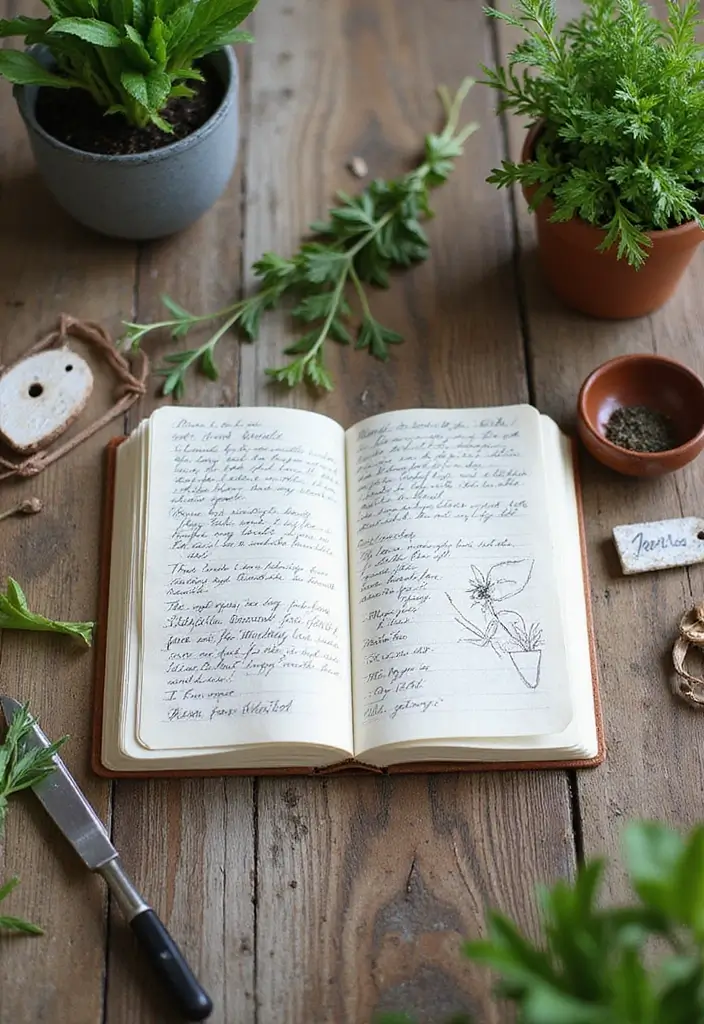
A gardening journal is an excellent tool for tracking your gardening journey. It helps to document what works, what doesn’t, and how your plants progress over time. Keeping a record of your experiences can enhance your gardening skills significantly.
What to Include in Your Journal:
– Planting dates and varieties.
– Weather patterns and changes.
– Observations on growth and pests.
One great option to consider is the Clever Fox Gardener’s Journal. This guided gardening notebook is perfect for documenting your planting experiences, whether you’re growing vegetables, flowers, or herbs. With a 5-year garden log, it not only helps you keep track of essential details but also encourages reflection on your gardening successes and challenges.
By maintaining a journal, you can revisit past seasons and learn from your experiences, ultimately becoming a better gardener over time.
Conclusion
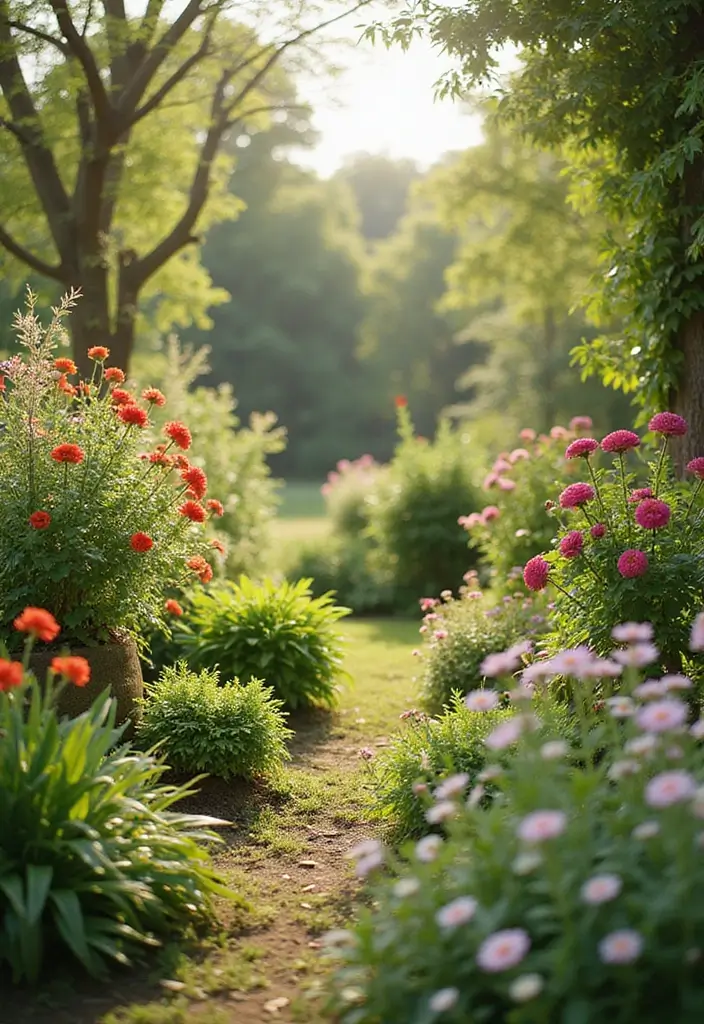
Embarking on your gardening journey can be incredibly rewarding, whether you’re a beginner or a seasoned pro. By incorporating these 26 home garden ideas, you can create stunning landscapes, grow your food, and even support the environment.
Don’t hesitate to experiment and find what suits your style best. Happy gardening!
Note: We aim to provide accurate product links, but some may occasionally expire or become unavailable. If this happens, please search directly on Amazon for the product or a suitable alternative.
This post contains Amazon affiliate links, meaning I may earn a small commission if you purchase through my links, at no extra cost to you.
Frequently Asked Questions
What are some easy vertical gardening ideas for small spaces?
If you’re new to vertical gardening, start with vertical garden walls or use hanging pots to maximize your space. These options not only save floor area but also allow you to grow a variety of plants like herbs and succulents. You can easily create a stunning display by using simple materials like wooden pallets or repurposed items!
How can I create a container garden for vegetables?
Creating a container garden is a fantastic way to grow vegetables without the need for a large backyard. Start by choosing containers that are at least 12 inches deep for root vegetables. Use a good quality potting mix, and consider companion planting to maximize your yield. Don’t forget to water regularly and ensure your plants get enough sunlight!
What are some sustainable gardening practices I can try at home?
Sustainable gardening is all about working with nature. You can implement practices like composting kitchen scraps, using native plants that require less water, and creating a rain garden to manage runoff. These methods not only help the environment but also create a healthier garden ecosystem!
How do I design a flower garden layout for maximum impact?
When designing a flower garden layout, consider layering plants by height for a more dynamic look. Place taller plants in the back and shorter ones in the front. Incorporate a mix of colors and textures, and include pollinator-friendly plants to attract bees and butterflies. Using curved edges can also create a more inviting and natural feel to your garden!
What tips do you have for beginners in backyard gardening?
As a beginner, start small to avoid feeling overwhelmed. Choose easy-to-grow plants like herbs or succulents. Make sure to plan your space well, considering sunlight and water access. Utilize raised beds or containers if soil quality is an issue, and keep a gardening journal to track your progress and learn from your experiences!
Related Topics

